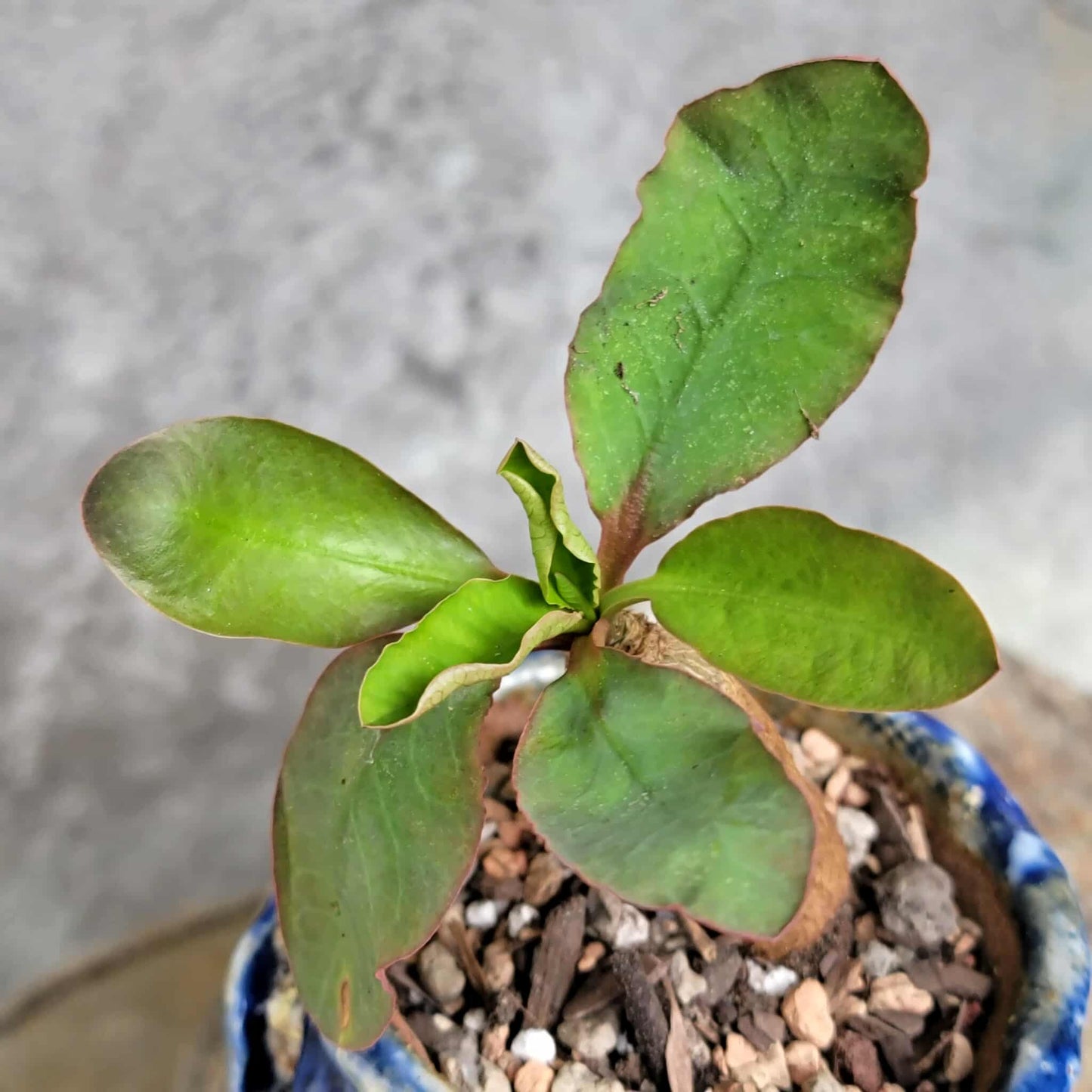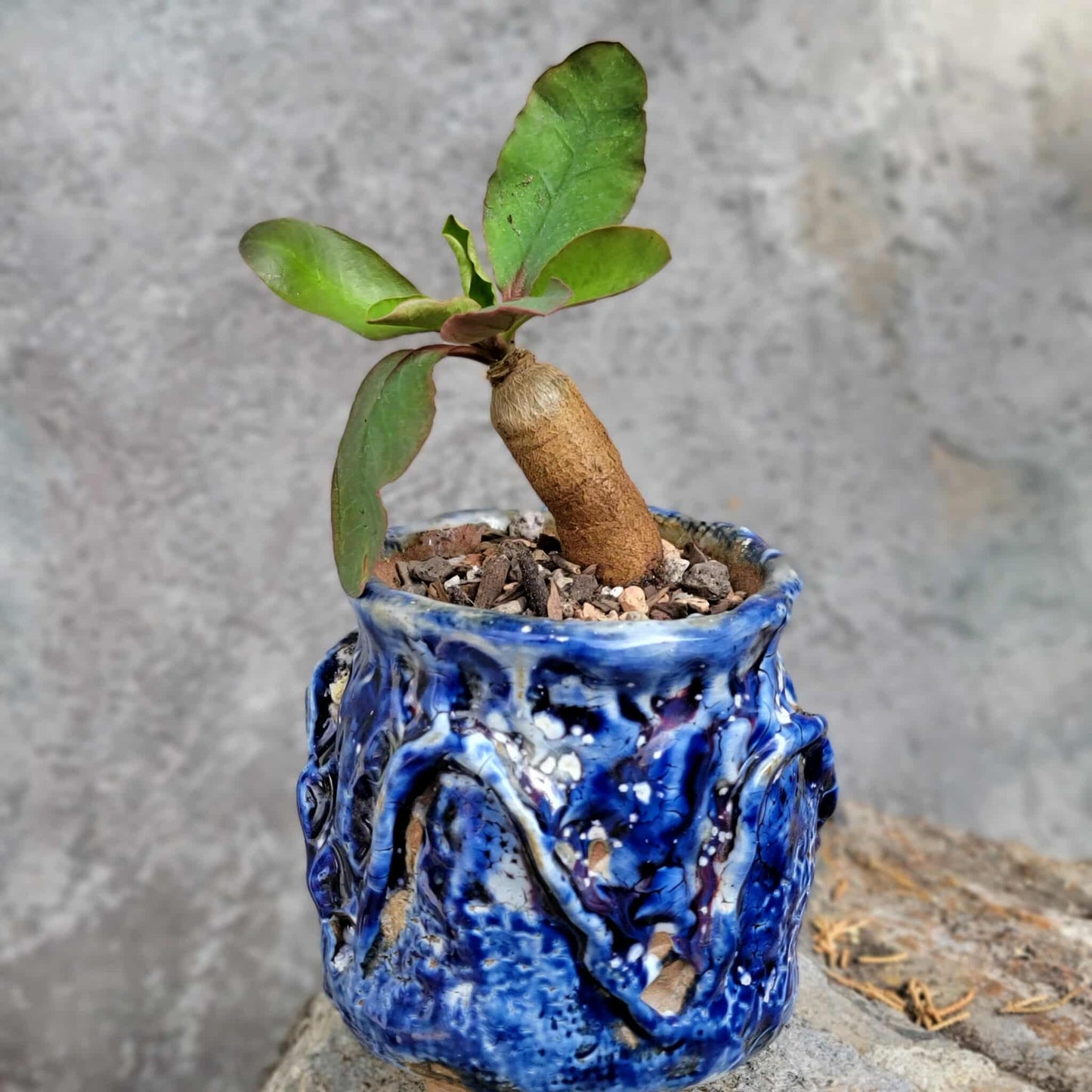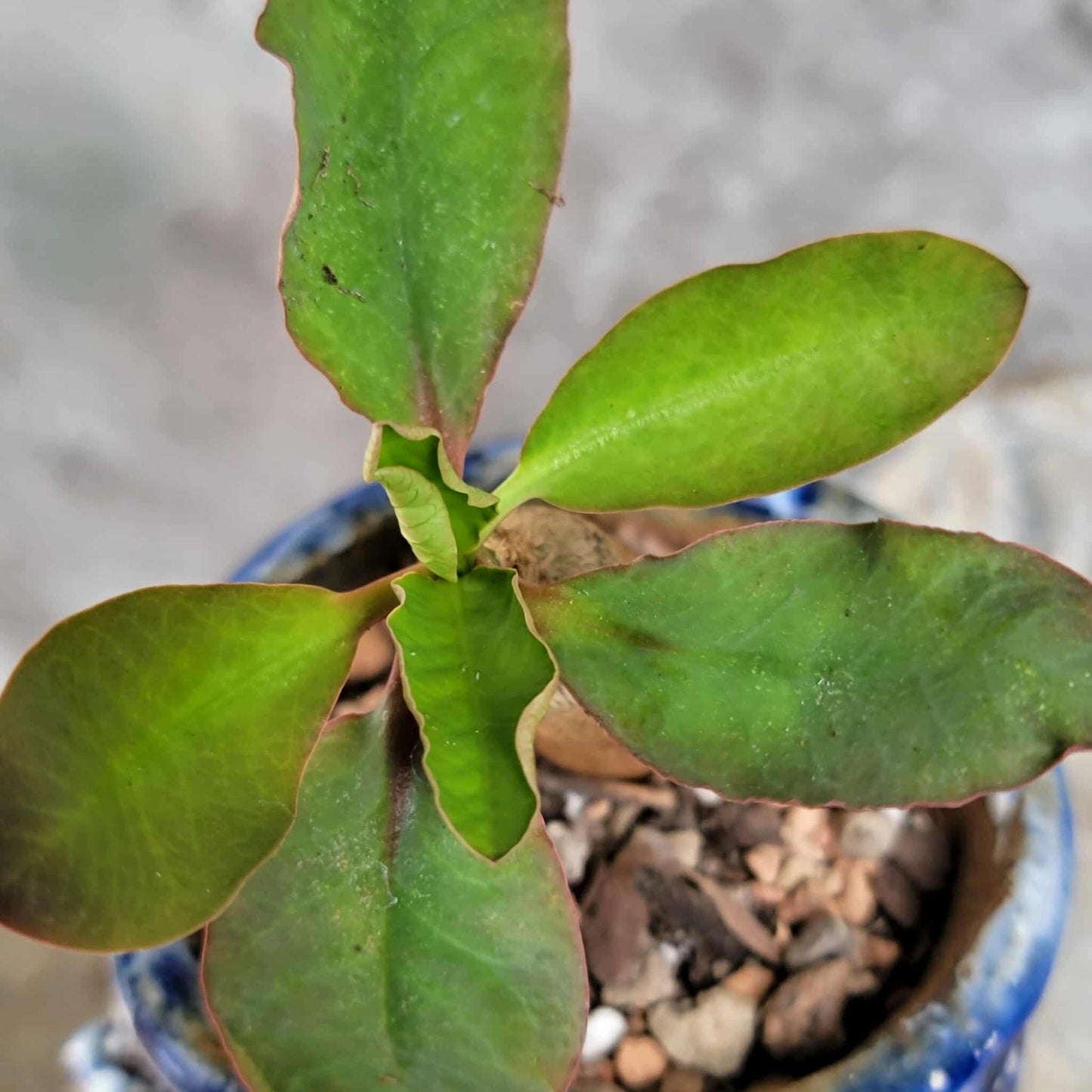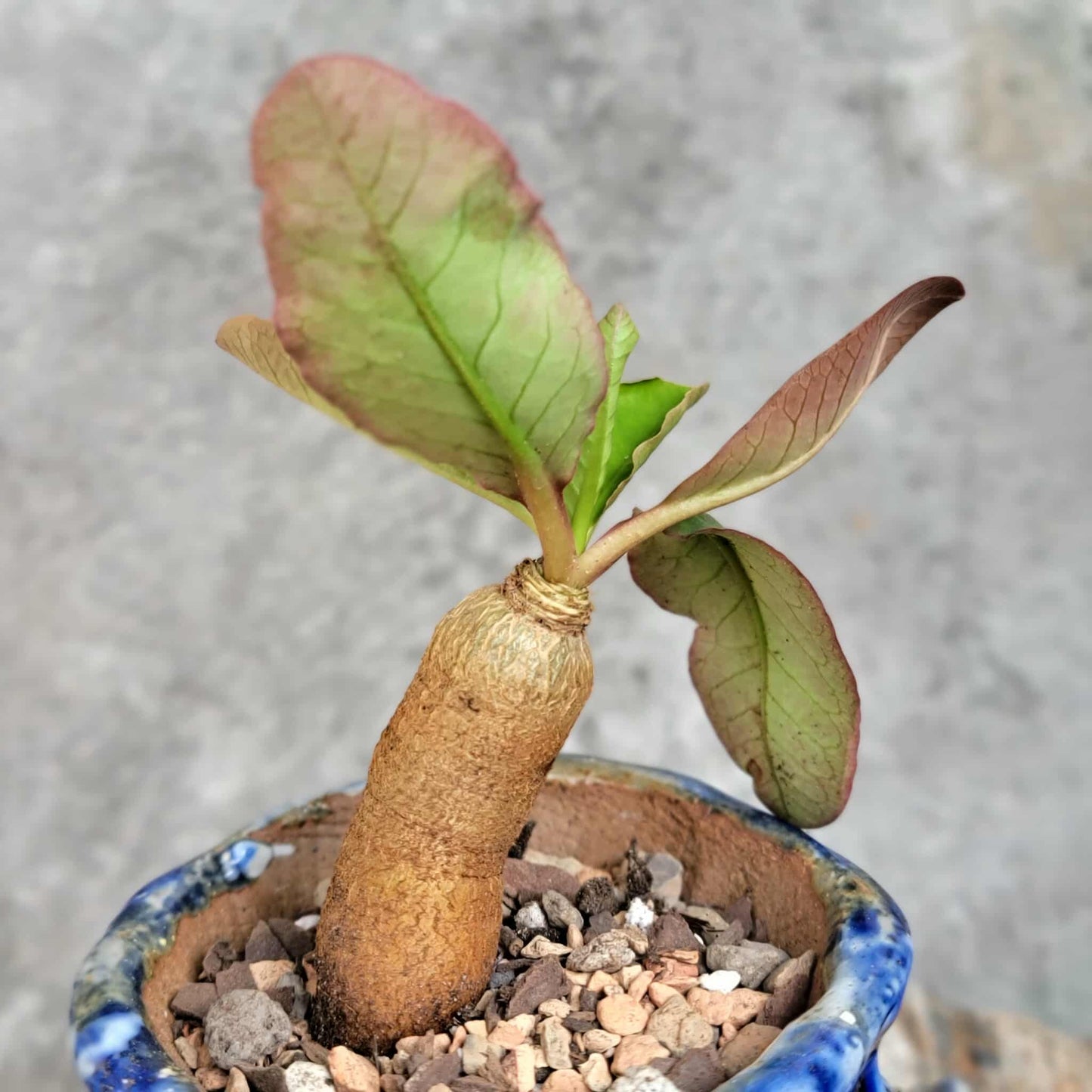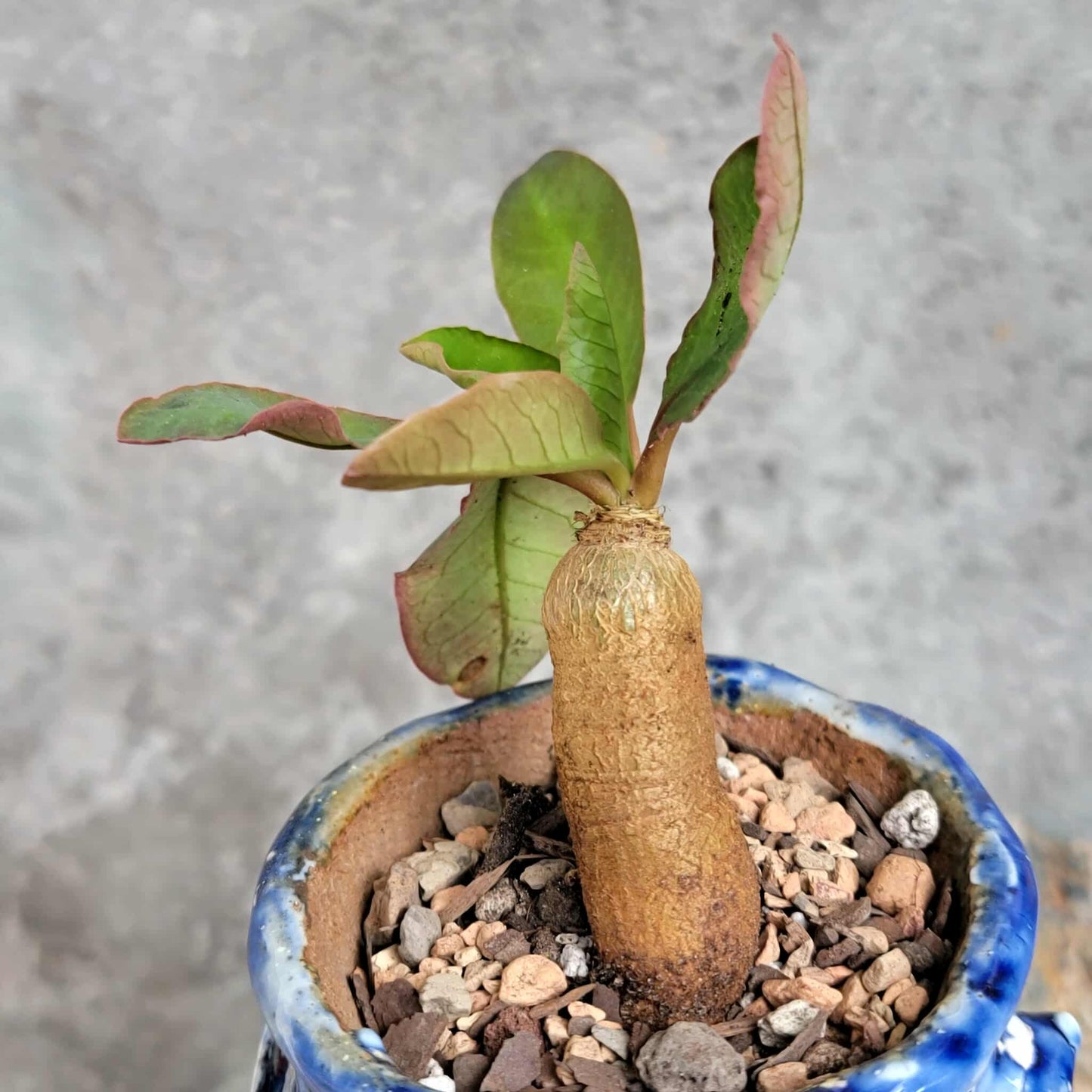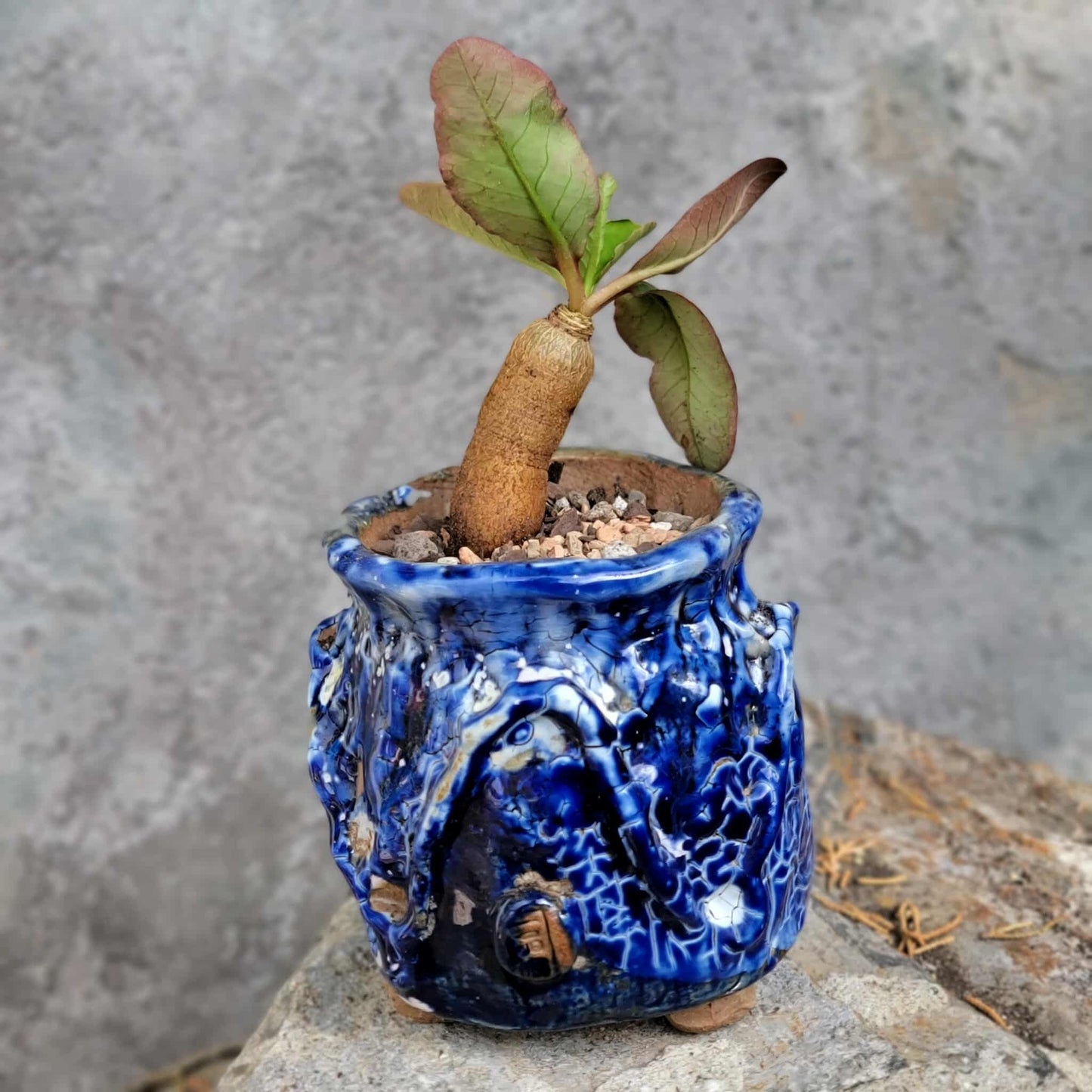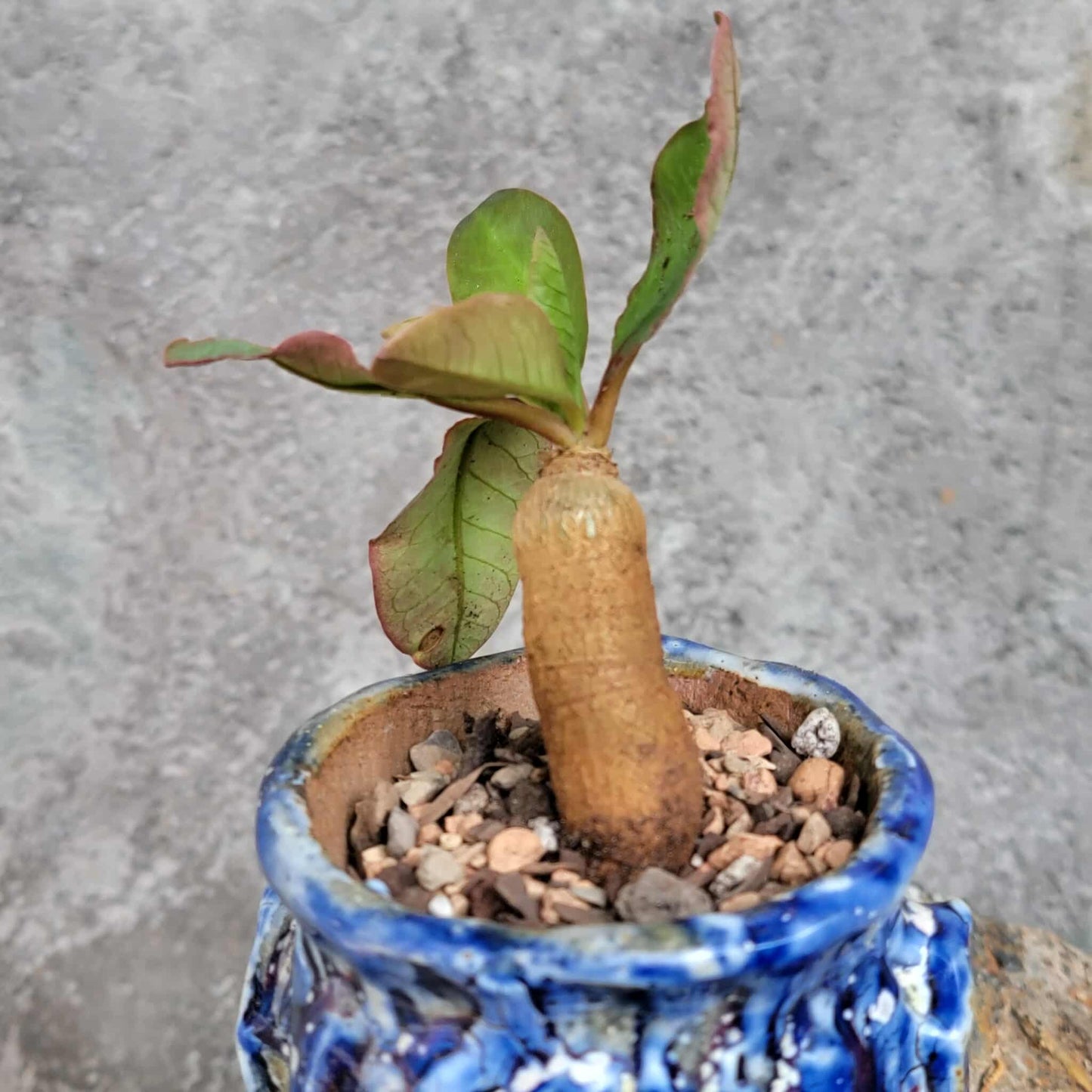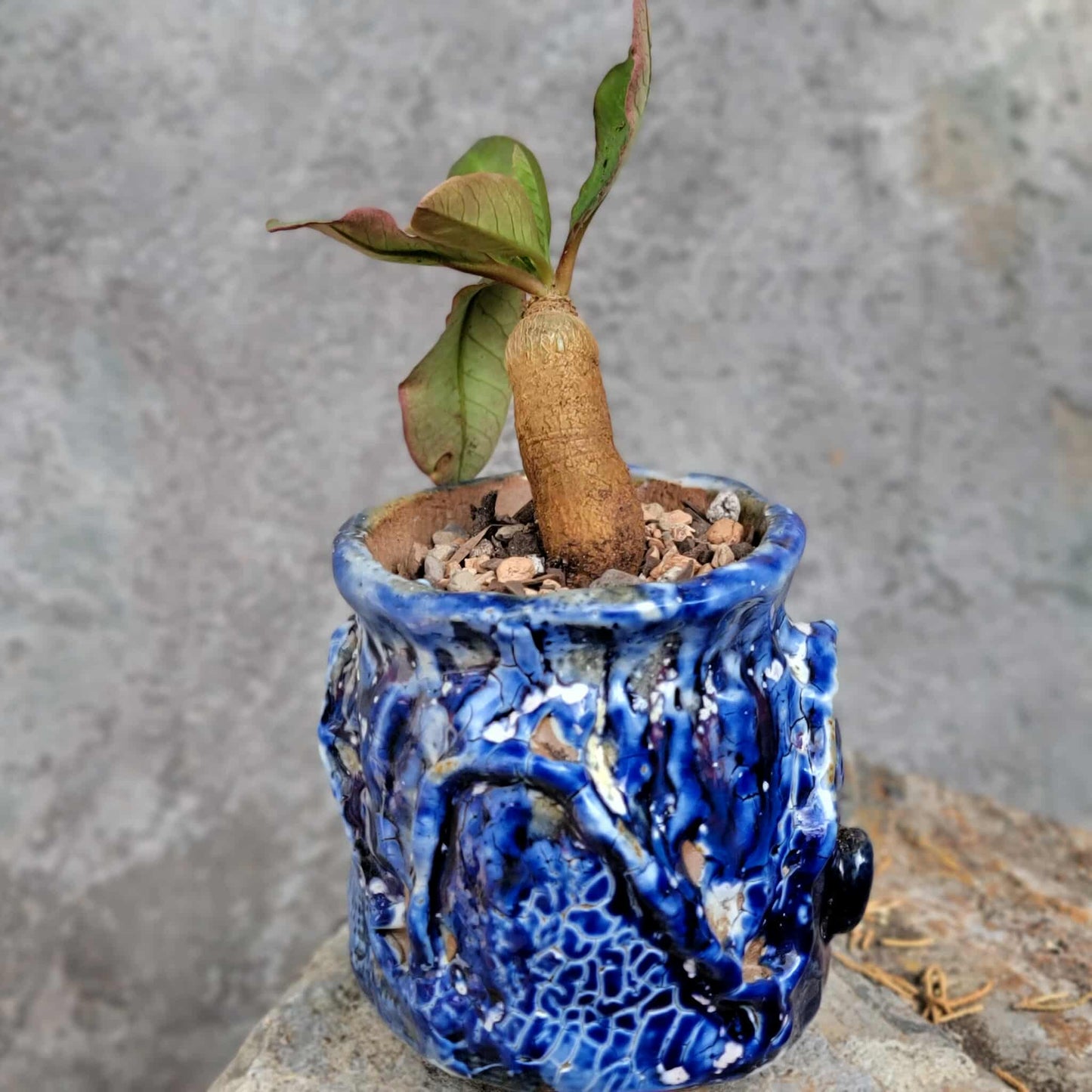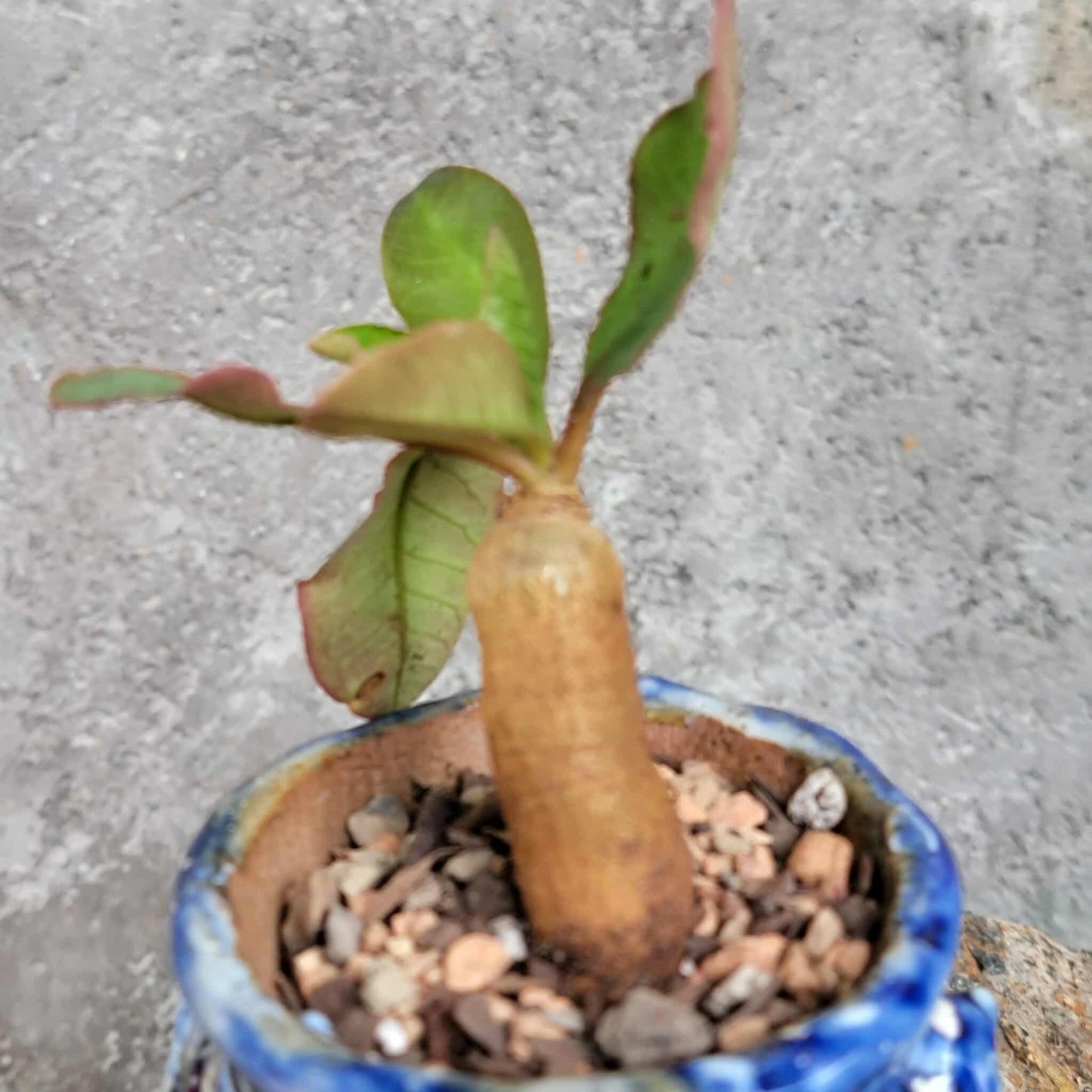Shangri-Ha Cactus Ranch
Euphorbia ecklonii
Euphorbia ecklonii
Couldn't load pickup availability
Euphorbia ecklonii
You will receive this exact, very rare specimen.
Measures 4” tall above the soil line
Roots as shown.
Showcased here in glazed terra cotta planter (sold separately).
Will be shipped bare root.
Euphorbia ecklonii is a winter-growing, caudiciform succulent from the Western Cape province of South Africa. The plant is a dioecious geophyte, meaning it is a perennial herb with separate male and female plants, and it dies back to its subterranean tuberous rootstock during the summer.
Key Characteristics:
- Rootstock (caudex): The plant's most notable feature is its water-storing, tuberous rootstock, which can grow to 2.5–3 cm in diameter. This caudex is either fully buried or rests with its apex just above the soil line.
- Leaves: During its growing season in winter, it produces an annual flattened rosette of elliptical, leathery leaves.
- Flowers: The unisexual flowers (cyathia) appear in late winter, with a peak bloom in August in its native southern hemisphere.
- Fruits: The fruits are small, subglobose-trigonous capsules.
-
Dormancy: The leaves and stems wither and drop in the spring as the plant enters its summer dormancy.
Cultivation Requirements:
Euphorbia ecklonii is a challenging plant for most growers because it is prone to rot, especially if watered incorrectly during dormancy.
- Soil: Use an extremely well-draining, airy potting mix that contains mostly non-organic material like pumice, lava grit, or clay, with very little peat or leaf mold. The pot should have generous drainage holes.
- Watering:
- Winter: Water regularly during its active winter growing season.
- Summer: Keep the soil almost completely dry during its summer dormancy. Overwatering during this period can quickly cause the caudex to rot.
- Light: The plant tolerates full sun to light shade.
- Caudex exposure: Enthusiasts often raise the rootstock slightly above the soil to better display and appreciate its unique form.
- Hardiness: This species is tender and best suited for warmer climates (USDA Zones 10–11) or warm greenhouses in colder regions.
- Propagation: This plant is primarily propagated by seed.
